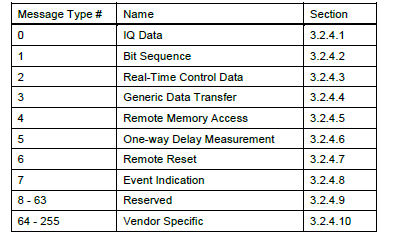Evolved Fronthaul: eCPRI Specification

This is the fifth in a series of blog posts on the Evolution of Fronthaul, links to past posts below.
Preparing for Massive MIMO and 5G
As CPRI technology is increasingly being deployed in cell densification and CRAN projects, eCPRI is starting to receive the attention of the global wireless community. As I outlined in the previous post, eCPRI is becoming necessary because new 5G services and massive MIMO deployments will demand fronthaul capacities that will challenge the CPRI technology. Therefore, many vendors are working hard to introduce eCPRI-based radios and baseband units (BBUs), so they are ready for massive MIMO and 5G service deployments later this year and beyond.
Massive MIMO/5G requires a new look at functional splits between the BBU and remote radio head (RRH). In CPRI terminology, they are known as radio equipment control (REC) and radio equipment (RE). The eCPRI is based on a functional split in the PHY component. PHY includes several functions as depicted below. eCPRI specification recommends that the split option IU is used for uplink, and either IID or ID is deployed for downlink. Other organizations are considering these and other split options that we will be looking at in future blogs.

In eCPRI, those entities are called eCPRI radio equipment control (eREC) and eCPRI radio equipment RE (eRE) as depicted below. We will learn in future blogs that other emerging standards use different names for similar functions; but let’s use the terms eREC and eRE for right now.

Three Planes Required for eCPRI
Three planes are necessary for interaction between eREC and eRE: user plane, sync plane, and control and management (C&M) plane. The eCPRI standard defines the user plane, and refers to other standards for the definition the other planes. For example, an operator is free to choose precision timing protocol (PTP) or global positioning system (GPS) for synchronization.
eCPRI mentions packet-based technologies for the transport of user plane, and both Ethernet and Ethernet/IP/UDP are possible. For the physical layer, eCPRI refers to Ethernet rates 10 Gbps to 100Gbps. The frame format is based on using an Ethernet or Ethernet/IP/UDP frame that uses the unique Ethertype of AEFE16. The frame includes a eCPRI header that follows the layer 2 or layer 2/3/4 header and is followed by the eCPRI user plane payload. eCPRI defines several message types listed below.

The most significant part of the user plane is given by IQ data or bit sequence; the former for split options E or IU/ID, and the latter for split option IID. Since split option E is very bandwidth intensive, most IQ data deployments are expected to be based on split option IU/ID. The IQ data or bit sequence are carried in association with their respective real-time control data that contains vendor specific information between PHY processing elements in eREC and eRE.
Beyond this vendor specific information, there are several other examples of vendor specific elements in eCPRI specification. This vendor specific implementation makes it hard to deploy interoperable systems with different vendors for eREC and eRE. This is the main reason for alternative standards such as xran and ORAN that we will cover in future blogs.
Please read the other blog posts in this Evolution of Fronthaul series:
- Introduction to the Evolution of Fronthaul Networks
- Part 2. Fiber in Wireless Deployment
- Part 3. CPRI – Transport Layer Deployment
- Part 4. Evolved Fronthaul: CPRI 10 and eCPRI Testing on the Road to 5G
If you would like to learn more, please read my white paper, The Evolution of Fronthaul Networks.
Additional resources: 5G Testing, 5G Deployment and Fronthaul




